Spongy Moth
Description
Spongy moths are a species of European moth that has devastating impacts on forests. They feed on the leaves of a wide range of host trees, including oak, willow, birch, and maple.1,2,3 Spongy moth larvae (caterpillars) are dark coloured and hairy, with a distinct double row of five pairs of blue spots, and double row of six pairs of red spots, down its back. Male moths are light brown in colour, while females are white, larger and flightless.
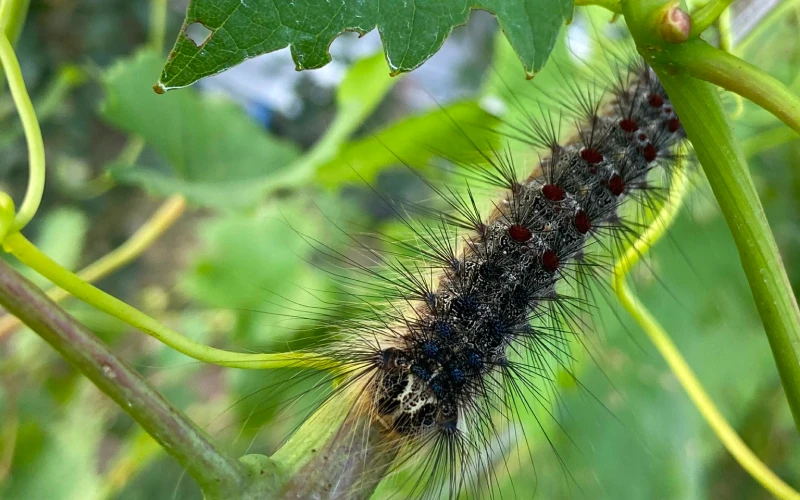
© eugeniopastoris via iNaturalist.org, used under CC BY NC
Introduction and Spread
Spongy moths were introduced to North America 1869 as part of a failed silk-worm breeding experiment.4
Spongy moth larvae can naturally disperse short distances on windblown silk threads and adult males can fly short distances 1, 4. Humans can inadvertently transport Spongy Moth at any life stagehowever it is particularly easy to accidentally transport the eggs, which can be laid on many different surfaces (e.g., wood, plants, stone, inorganic materials).
Potential industrial vectors (i.e., means of movement) for spongy moths include shipping pallets, containers, cargo, trains, commercial trucks, and imports of stone and wood.
Potential domestic vectors for spongy moths include firewood, vehicles (cars, trailers, ATVs), hiking or outdoor gear, and pets.
Distribution
Since their initial establishment in Boston, USA, they have spread into and established in other northeastern states and eastern provinces in Canada. There are established populations in Quebec, New Brunswick, Nova Scotia, Ontario, and Prince Edward Island.5 Spongy moths have also been detected in British Columbia, Alberta, Saskatchewan, and Manitoba, however these introductions have been eradicated.
Impacts
Spongy moths defoliate (i.e., remove the leaves from) their host trees which, if severe enough, can weaken trees and make themsusceptible to attack from other insects and diseases.4, 6 Damage from spongy moths lower the economic value of trees and repeated defoliation may be fatal 1.
The 2021 outbreak of spongy moth saw over 1.8 million hectares of forest defoliated in Ontario – that’s equivalent to more than 3 million football fields! .1
Physical contact with spongy moths may cause minor health concerns, including dermatitis, eye irritation, and respiratory complaints.3,4
Spongy moth control is costly and may have negative impacts on other species, including native butterflies and moths.1, 6
Life Cycle
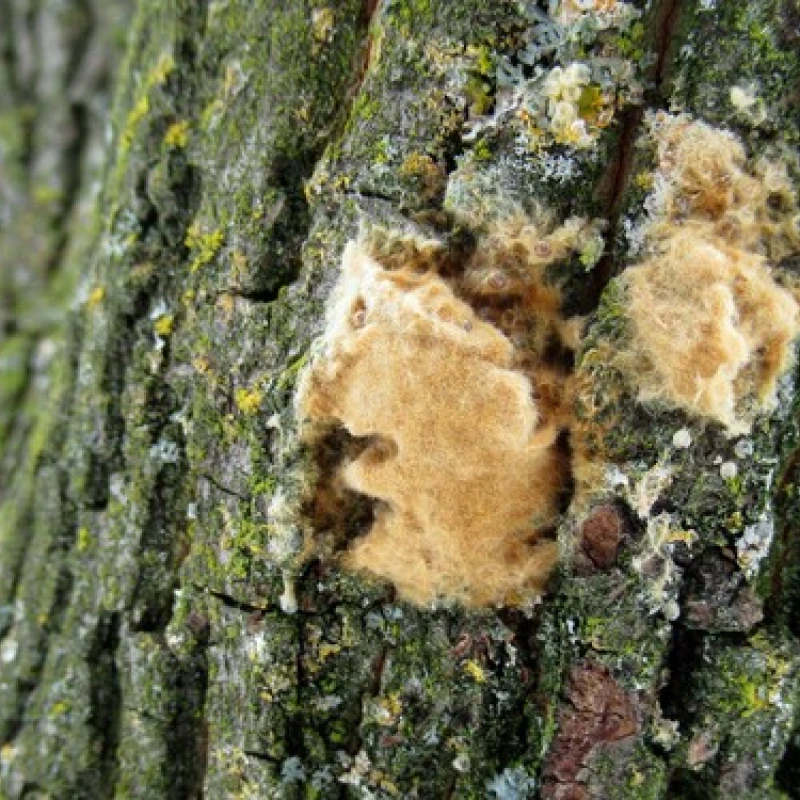
Fall/Winter
Egg masses are 3–6 cm long and covered in tan coloured hairs from the female’s abdomen.
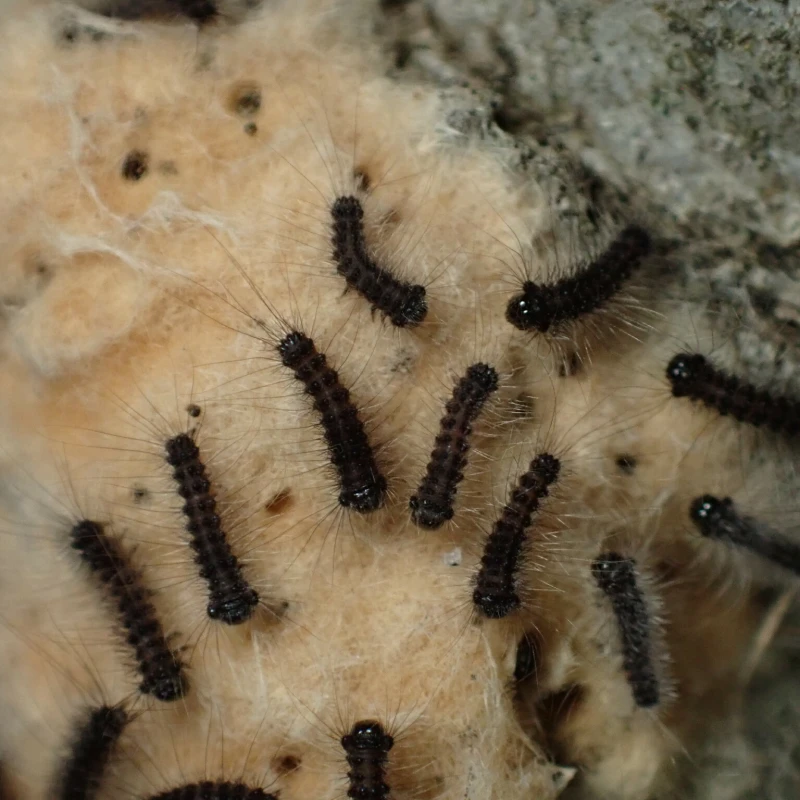
Spring/Early Summer
Larvae go through a series of moults. Later stages have blue and red tubercles (outgrowths).
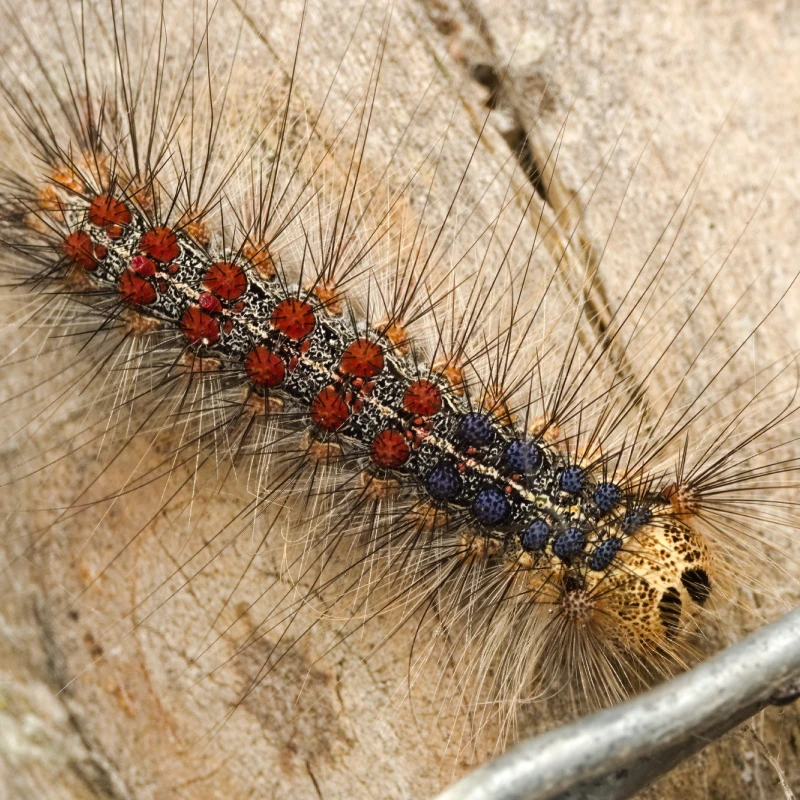
Early-Mid Summer
Larvae become reddish-brown pupae for 1–2 weeks.
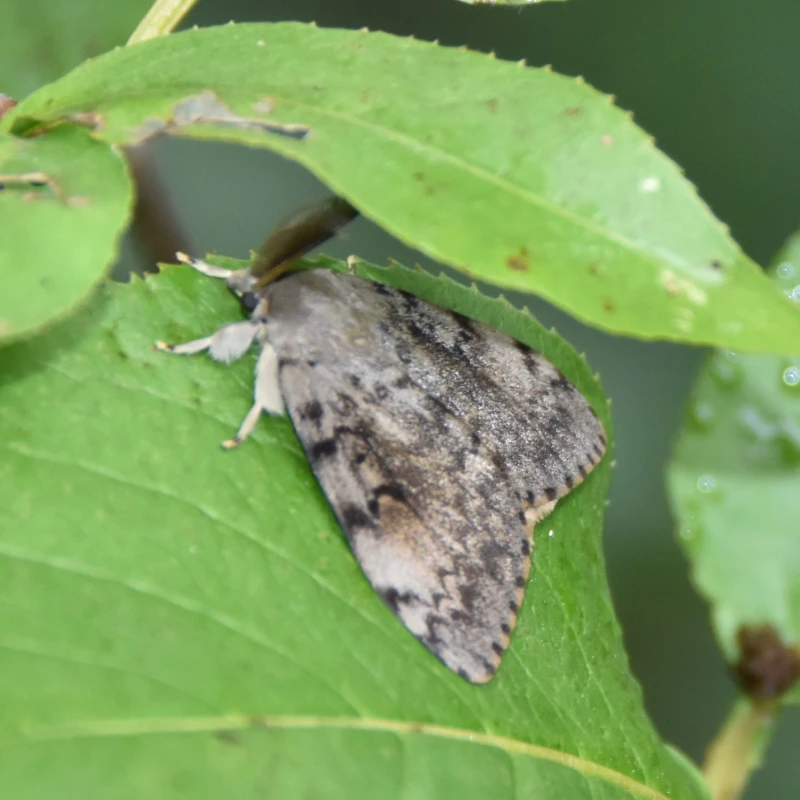
Late Summer
Males are mottled brown and have a wingspan of 3.5–4 cm. Unlike females, they are able to fly.
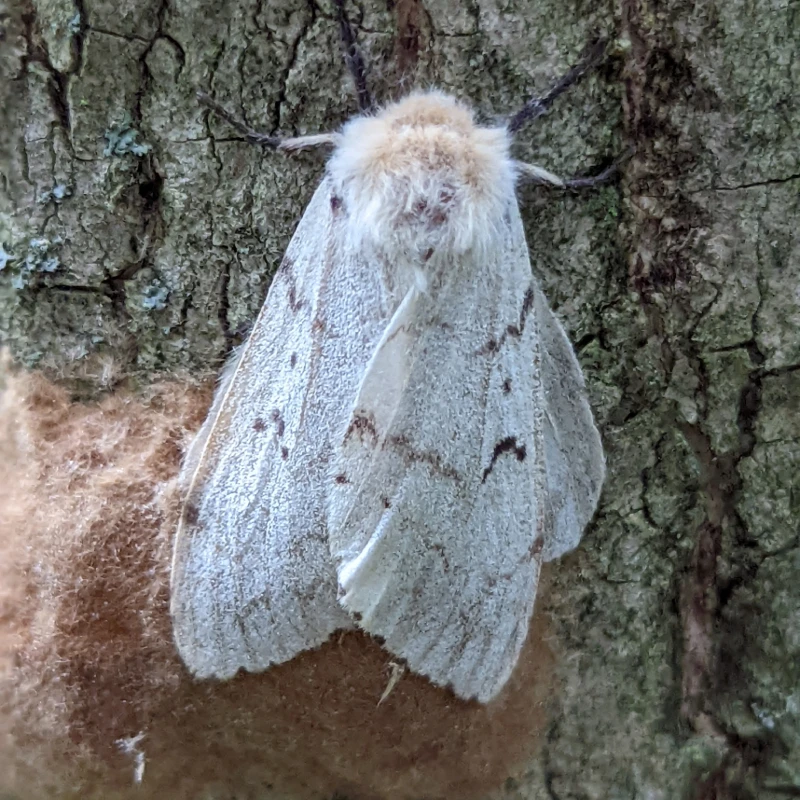
Late Summer
Females are white with black markings and have a wingspan of 5.5–7 cm.
Spread and Control
Everyone can help prevent the spread of spongy moths by doing the following:

Play Clean Go
Check before you go
Spongy moths can spread by hitchhiking or laying eggs on cars, trailers, campers, and ATVs. Carefully inspect your vehicle for spongy moth eggs, caterpillars, or moths. Sweep out your trailer and camper. Remove any plants, insects, or mud.
Check your outdoor items and gear
Spongy moths are found in rural and urban areas. So, it’s important to inspect all your outdoor items, including grills, patio furniture, yard games, and camping gear.
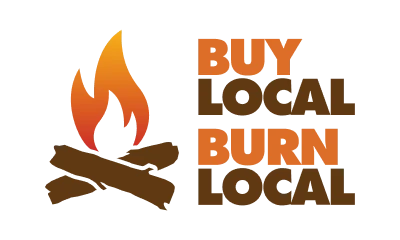
Buy Local Burn Local
Spongy moths feed or lay eggs on more than 300 plant and tree species. Buy firewood close to where you plan on using it to avoid transporting unwanted hitchhikers. Leave unused firewood on site.
Destroy it!
Scrape off and destroy egg masses or caterpillars by placing them in hot, soapy water and leaving them to soak for at least 2 days before disposing of them in the garbage.
Observe and Report
Keep an eye out for spongy moths, especially in western Canada or Newfoundland. Visit reportcanadainvasives.ca to learn how to report invasive species in your province or territory.
Additional Resources
1. Jahant-Miller, C.J. 2020. Environmental drivers of morphological and physiological adaptation in an invasive defoliator, Lymantria dispar. Doctoral thesis, State University of New York.
2. Keena, M. A., & Richards, J. Y. (2020). Comparison of survival and development of gypsy moth Lymantria dispar L. (Lepidoptera: Erebidae) populations from different geographic areas on North American conifers. Insects, 11(4), 260. https://doi.org/10.3390/insects11040260
3. Haq, M., O’Toole, A., Beecker, J., & Gooderham, M. J. (2021). Return of Lymantria dispar dispar (gypsy moth): A case report. SAGE Open Medical Case Reports, 9, 2050313X2110579. https://doi.org/10.1177/2050313×211057926
4. Gooderham, M., Haq, M., Beecker, J., & O’Toole, A. (2021). Lymantria dispar dispar (Gypsy) Moth Dermatitis. Journal of Cutaneous Medicine and Surgery, 25(5), 555–556. https://doi.org/10.1177/12034754211032206
5. CFIA (Canadian Food Inspection Agency). 2022. Lymantria dispar dispar (LDD) moth. Web page available at: https://inspection.canada.ca/plant-health/invasive-species/insects/ldd-moth-and-agm/ldd-moth/eng/1329836269430/1329836504450
6. CFIA (Canadian Food Inspection Agency). 2021. Lymantria dispar dispar (LDD moth) – Fact sheet. 2021. Web page available at: https://inspection.canada.ca/plant-health/invasive-species/insects/ldd-moth-and-agm/fact-sheet/eng/1330355335187/1335975909100
Gooderham, M., Haq, M., Beecker, J., & O’Toole, A. (2021). Lymantria dispar dispar (Gypsy) Moth Dermatitis. Journal of Cutaneous Medicine and Surgery, 25(5), 555–556. https://doi.org/10.1177/12034754211032206